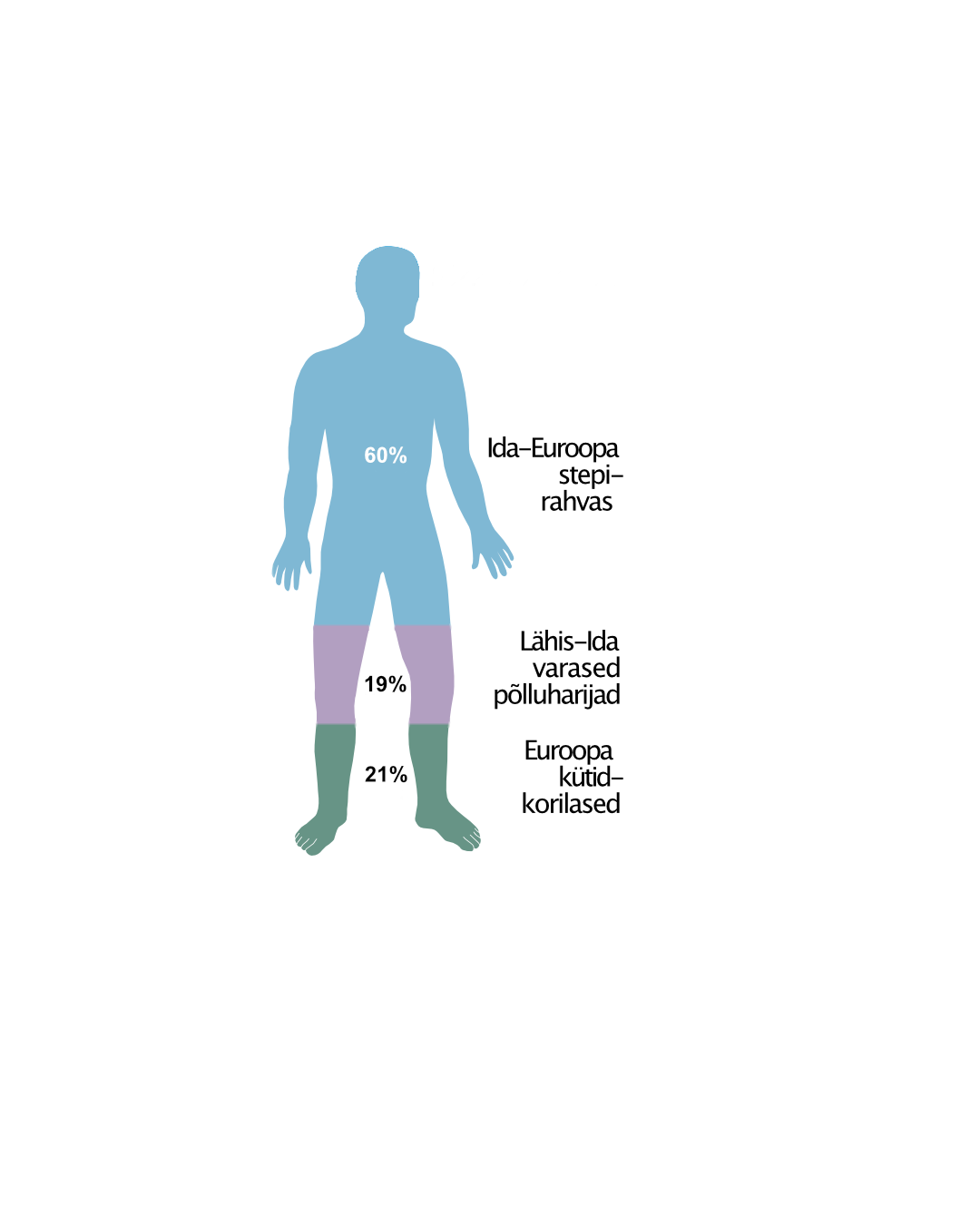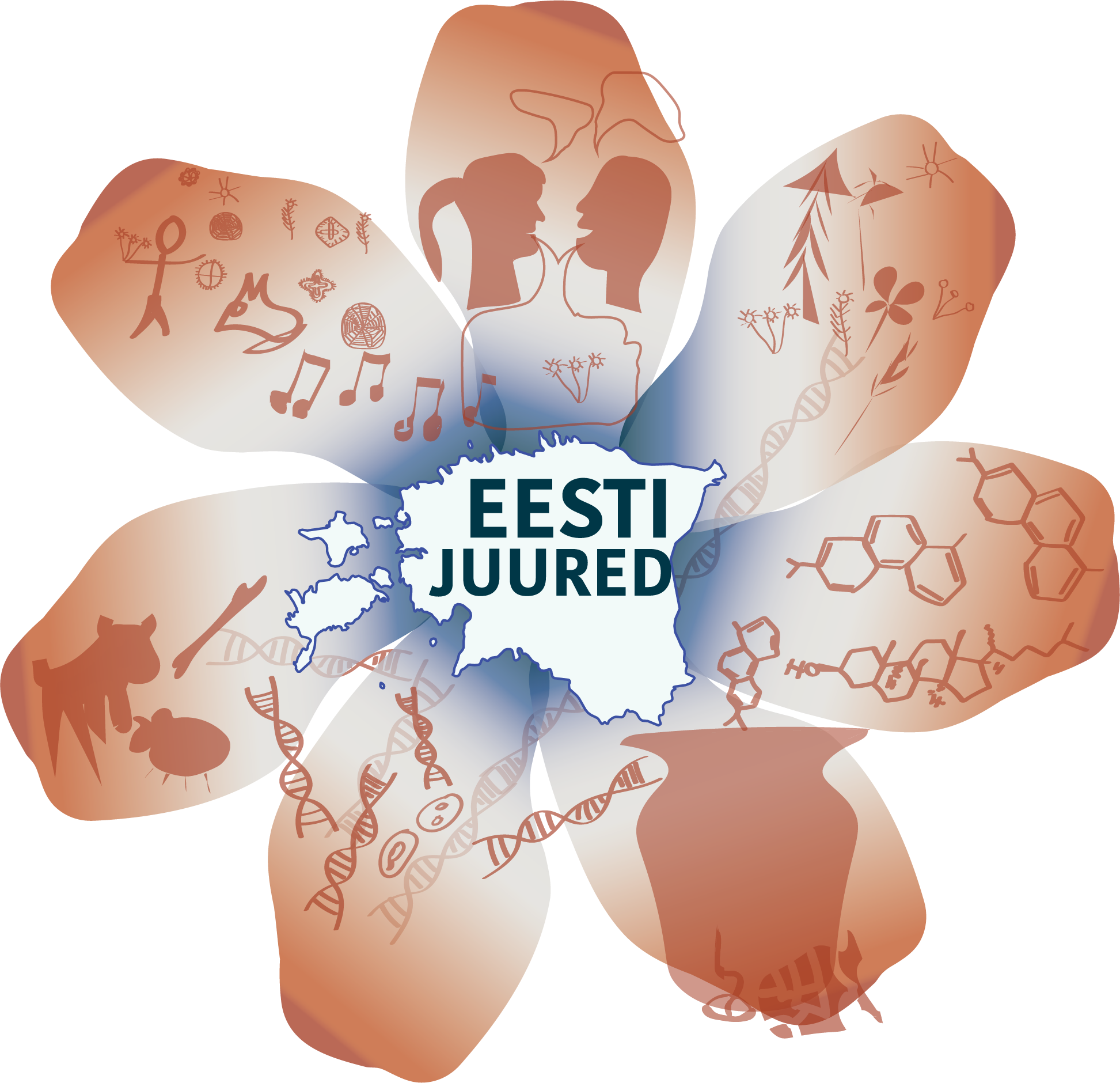We currently know the ancient DNA of people buried in Estonian, Finnish and Latvian Bronze Age stone graves only from Estonia – the remains of nineteen individuals from the Iru, Jõelähtme, Muuksi, Napa, Rebala, Väo and Vehendi graves have been studied.
When studying the genetic material of those buried in Estonian stone-cist graves, it has become clear that similarly to the prior Corded Ware peoples, a large role in the genesis of this group of people has been in the migration waves from three essential sources, the influence of which is indicated by the genome of the studied individuals that is studied through the ancestral components that can be connected to their heritage. These originate from the European Hunter-Gatherers, Early European Farmers originating from the Near East and the Western Steppe Herders of Eastern Europe. Even so, the genome of those buried in stone-cist graves differs from that of the Corded Ware peoples – the proportion of Western or Scandinavian Hunter-Gatherer heritage increased. It is interesting to note that the latest Estonian hunter-gatherer Comb Ceramic peoples belonged genetically to the slightly different Eastern Hunter-Gatherers, so that the genetic change that took place with the population of the Estonian territories building the stone-cist graves can rather be connected to Scandinavian influences that are visible also in the archaeological material.

It was also discovered that in the Estonian territory precisely during the Bronze Age, those genetic variants became widespread the markers of which are now considered characteristic of North Europeans – light hair, eyes and skin and lactose tolerance.
| Individual | Date | Eye colour | Hair colour | Skin colour | Lactose tolerance | High cholesterol |
|---|---|---|---|---|---|---|
| Jõelähtme 7 | 1220–1010 calBCE | blue | brown/ dark brown | medium | + - | + + |
| Jõelähtme 34 | 1060–850 calBCE | brown | dark brown/ black | medium | - - | + - |
| Muuksi Lõokese skeleton 1 | 930–810 calBCE | blue | blond | medium | + - | + - |
| Muuksi Lõokese skeleton 3 | 1220–1020 calBCE | blue | brown/ dark brown | medium | - - | + - |
| Muuksi Toomani 5 | 1280–1050 calBCE | brown | dark brown/ black | medium | + - | + - |
| Napa 3 | 1030–890 calBCE | blue | dark brown/ black | medium | + - | + - |
| Rebala Lastekangur 2 | 780–430 calBCE | blue | dark brown/ black | medium | + + | + - |
| Väo Jaani A skeleton 1 | 730–390 calBCE | brown | dark brown/ black | medium | - - | - - |
| Väo Kangru 8 skeleton 1 | 930–810 calBCE | blue | brown/ dark brown | fair | + - | - - |
| Vehendi 11 skeleton III | 1210–1000 calBCE | blue | dark brown/ black | medium | + - | + - |
Among the studied Bronze Age individuals, two second degree relatives were found – probably an uncle and his nephew. Somewhat surprisingly, the relatives were not buried in the same site, but in Rebala and Väo burial sites 13 km apart. The discovery of close relatives from such a small selection and from different burial sites can indicate that only a certain part of the population was buried in the stone-cist graves (the so-called elite).
Still noteworthy is one individual who was buried in a stone-cist grave, but at a significantly later date – during a later Iron Age burial. This person buried in the Loona burial site differs from the prior stone-cist grave burials also genetically – similarly to the ones buried in Iron Age tarand-graves, a fourth ancestral component can be found in his genome, apparently originating from Siberia, that has likely been accrued during the arrival of a new Early Iron Age migration wave.


